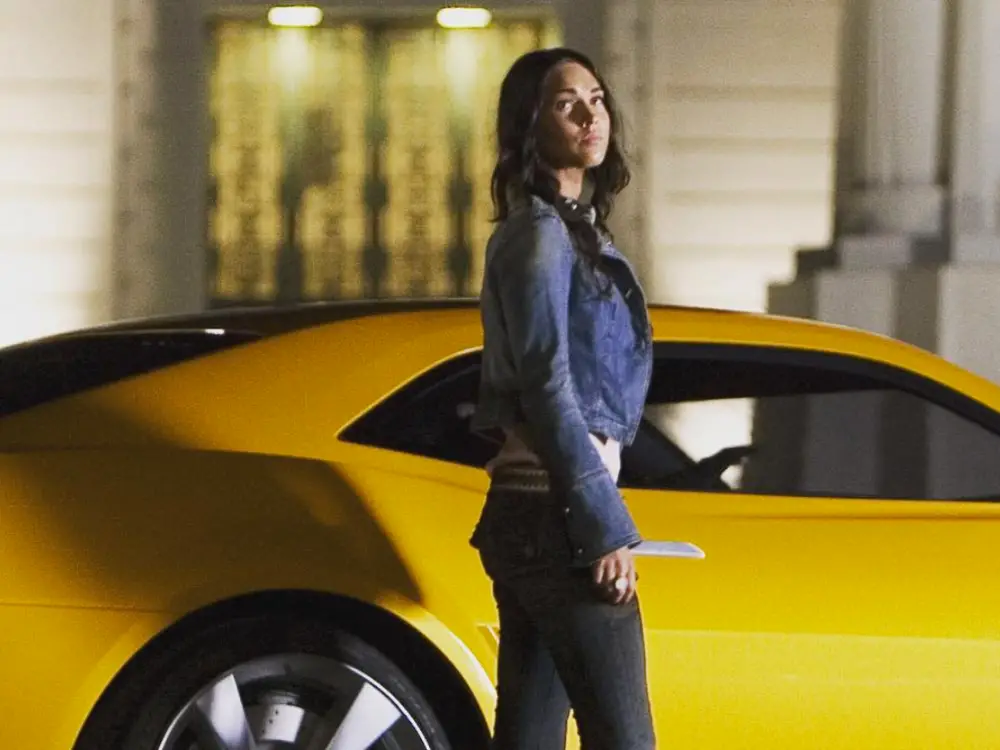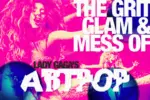We all know the “Cool Girl.” Some of us have even tried to be her. She seems to get everything, but her existence is a conundrum. She doesn’t care about what she eats but wears a size 2. She doesn’t worry about wearing makeup, but always looks amazing. She has somehow escaped every insecurity that plagues women on and off the screen. So how does she exist? Because the Cool Girl is a male fantasy. The best example of the Cool Girl analysis is the 2012 novel and 2014 film “Gone Girl.”
“Men always say that as the defining compliment, don’t they? She’s a cool girl,” Amy Dunne says. “Being the Cool Girl means I am a hot, brilliant, funny woman who adores football, poker, dirty jokes, and burping, who plays video games, drinks cheap beer, loves threesomes and anal sex, and jams hot dogs and hamburgers into her mouth like she’s hosting the world’s biggest culinary gang bang while somehow maintaining a size 2, because Cool Girls are above all hot.”
The Cool Girl is an established character type who likes everything her male counterpart does and agrees with everything he says. She is effortlessly thin, beautiful and, most importantly, “she’s not like other girls.” These women can be seen in several films, including Cameron Diaz’s character in “There’s Something About Mary,” Megan Fox’s character in “Transformers,” Sloane from “Ferris Bueller’s Day Off,” Mila Kunis in “Black Swan,” Charlize Theron’s character in “A Million Ways to Die in the West,” Robin Scherbatsky from “How I Met Your Mother,” Mila Kunis’s character in “Forgetting Sarah Marshall” and even Katy Perry in her song “One of the Boys,” just to name a few.
The Cool Girl first became popular with 1920s flapper and actress Clara Bow. She flirted with famous actors such as young John Wayne. She drank, danced and drove cars with boys in the film “Dancing Mothers.” With the movie “It” she became a worldwide star and the original Cool Girl. This beautiful, talented actress cared little for the Hollywood spotlight. As a child she played with boys and avoided typically feminine activities. “I always played with the boys. I never had any use for girls and their games. I never had a doll in all my life,” Bow said. “But I was a good runner, I could beat most of the boys and I could pitch.”
Despite the lack of makeup, fancy clothes or other beauty products, Bow was an instant success in Hollywood. Her stunning face was submitted to a magazine and led to her career. She was all of Hollywood’s, and all of men’s, “ideal women.” Bow’s character drank and smoked. In her film “It,” a line of women were interviewed, but she was the only one described as having “it.” A song was created for Bow and her character, singing, “She’s got it, and plenty of it, brother. I never saw another have so much of such and such.”
While the Cool Girl often exists as a character trope, her image can also be seen in many modern actresses. Think Jennifer Lawrence’s interviews discussing her ability to eat steak, McDonalds and anything else all while maintaining perfect skin and a small waist. Or Katy Perry insisting she is the better choice over other girls. “I saw a spider and didn’t scream. ‘Cause I can belch the alphabet — just double dog dare me. And I chose guitar over ballet. And I tape these suckers down ‘cause they just get in my way.”
The Cool Girl can also be seen in TV shows such as “Gilmore Girls.” Main characters Lorelai and Rory eat enough food to weigh 400 pounds. “We are going to be so sick. It’s amazing that we still function,” Rory says as she and Lorelai fill up on sweets. It is amazing that they can function and, without any exercise or dieting, remain incredibly slim on diets of takeout pizza, coffee and candy. The problem with the Cool Girl isn’t her humor, her love of food, drink or other male-associated traits such as sports and wrestling. If all women with such traits were accepted, regardless of size or appearance, the world would be a better place. However, in the case of the Cool Girl, stereotypically male traits are only attractive in women when they are, well, attractive.
As writer Anne Helen Peterson said, a defining trait of the Cool Girl is her aloofness and effortless beauty. “Be chill and don’t be a downer, act like a dude but look like a supermodel,” she says. Take Cameron Diaz’s character in “There’s Something About Mary.” She is slim, blonde, bright and effortlessly beautiful with a wide smile and an easygoing personality. She admires her love interest’s slobby clothes, describing him as “a little different.”
Mary, a doctor, plays golf every morning and loves hamburgers and beer. “I want a guy who can play 36 holes of golf, and still have enough energy to take Warren and me to a baseball game, and eat sausages, and beer, not lite beer, but BEER.” She adores her co-star Ben Stiller. She finds him quirky and admits, “I know he’s a little different, but that’s what I like about him. He dresses like a complete dork, he chews with his mouth open, he hardly ever says the right thing.”
Megan Fox’s character is the best example of the inherent sexualization of the Cool Girl. Writers often ignore the Cool Girl and their character arcs outside of their male counterpart. This can be seen as the general treatment of this character type, but especially in films like “Jennifer’s Body” and “Transformers.” Her character, Mikaela, wears a short skirt, boots and a tank top. She begrudgingly accepts that she “has to” sit in the male protagonist’s lap when they are in a car with only one seat belt. One of their first exchanges in the movie is when Shia LaBeouf’s character stammers, “I was wondering if I could ride you home. I mean, give you a ride home.”
The Cool Girl is another trope that ignores women’s autonomy. This creates extreme discomfort in the women watching and playing these female characters. The sexualization of Megan Fox’s character is what led to her leaving the “Transformers” films. Despite co-stars noticing Fox’s intense discomfort, the sexualization continued until Fox felt that she had no other choice but to quit her job. “Megan developed this Spice Girl strength, this woman-empowerment [stuff] that made her feel awkward about her involvement with Michael, who some people think is a very lascivious filmmaker, the way he films women,” LaBeouf said. “Mike films women in a way that appeals to a 16-year-old sexuality. It’s summer. It’s Michael’s style. And I think [Fox] never got comfortable with it.”
Prior to the #MeToo movement, women in the media were not taken as seriously. The insults and rumors spread about Fox being difficult to work with encouraged everyone to dismiss her experiences. “I feel like I was sort of out and in front of the #MeToo movement before the #MeToo movement happened, I was speaking out and saying, ‘Hey, these things are happening to me and they’re not OK,’ … And everyone was like, ‘Oh well, f**k you. We don’t care, you deserve it.’ Because everybody talked about how you looked or how you dressed or the jokes you made.”
Megan Fox is held to the hot, understanding Cool Girl always. Because if there is one thing a Cool Girl is not, it’s defiant. “Cool Girls never get angry; they only smile in a chagrined, loving manner and let their men do whatever they want. Go ahead, shit on me, I don’t mind, I’m the Cool Girl.”
The Cool Girl is a great example of why the phrase “you’re not like other girls” is met with disdain. Because beneath the backhanded compliment is an insult toward an entire gender. “Not being like other girls” doesn’t mean being unique; in fact it can be very easy to be a Cool Girl willing to dismiss her emotions and have a beautiful face and body.
Writer Abby Rosmarin admits being the Cool Girl destroyed her life. “I used to love saying I was ‘not like other girls,’ she said. I considered myself the ‘perfect girlfriend,’ not because I was caring or empathetic, but because I swore I’d never get upset, never show signs of neediness, and certainly never say the L word first, even if the love I felt was slowly consuming me alive.” Like the Nice Guy, the Cool Girl is often written as the more appealing alternative to a regular girl.
In “Forgetting Sarah Marshall,” Rachel, played by Mila Kunis, is the appealing love interest due to her easygoing personality. When the male protagonist, Jason, offers to buy Rachel’s drink she says, “You don’t have to dote on me. I’m not that type of girl.” Rachel is the Cool Girl. She is the opposite of the needy, emotional Sarah Marshall who Jason is trying to escape. This can also be seen in “How to Lose a Guy in 10 Days” when Andie must make a guy dump her for her job.
To do this she pretends to be “the bad girlfriend.” Basically, everything we know guys hate,” Andie says. “I’ll be clingy, needy…” Her friend recommends also being touchy-feely and even calling him to say everything she’s had to eat.” An emotional girlfriend looking for support is “crazy.” This movie is a comedy and it is an exaggeration of these traits, but men’s distaste for emotions and commitment is accepted without question. Like Andie’s friend, Michelle, asks, “What’s wrong with that?”
On and off the camera, the Cool Girl, and the writers of her movie, dismisses the idea of a man needing to respect and protect a woman’s boundaries and desires. In “Black Swan” Mila Kunis’ character is used to demean ballerina Nina, Natalie Portman, and her emotions. Where Nina is anxious and hardworking, Odile drinks and has tattoos, all while maintaining a perfect image in the eyes of their male instructor. “Watch the way she moves,” he tells Nina. “Imprecise, but effortless. She’s not faking it.” The choreographer, Thomas, insists he only wants Nina to be more relaxed, insisting he “thinks she has potential,” even as he gives her the leading role.
Women who did not fit the Cool Girl type are made to feel insecure and uncomfortable until they stop protesting male advances or voicing their emotions. This can be seen when Thomas touches Nina, kissing her, playing with her hair and encouraging her to go home and masturbate. Nina is bulimic, anxious and abused by her family. Thomas insists that if Nina refuses her emotions, maintains her body type and maintains perfection all while being relaxed, she will be everything Odile is. She will be the Cool Girl.
Modern media receives stronger critique of such tropes. But for writers who wish to end this trope once and for all, there are other solutions. Destroy the idea that being a women is “effortless.” Being in a relationship requires input from both people. A good girlfriend is not an emotionless sex machine; she is a person. Being in good shape is difficult too. It requires attention, exercise and diet. The actresses playing these women are on strict regimens.
Instead of critiquing women who care, we need to raise up women who work. The women who speak their minds should not be shushed or made to be inconvenient. The Cool Girl is a girl who boys like. A woman is not a girl, and she is not a commodity. Women get angry, they cry, they have emotions like anyone else and we need to celebrate this. We must celebrate women who persevere, not because of a man’s motivation or desires, but because women are strong, emotional creatures like anyone else. There is nothing cool about faking perfection. The coolest thing a woman can be is genuine, her biggest defender and her loudest cheerleader. She has standards and dreams of her own. She is a human being, and because of that she cannot be perfect.
















